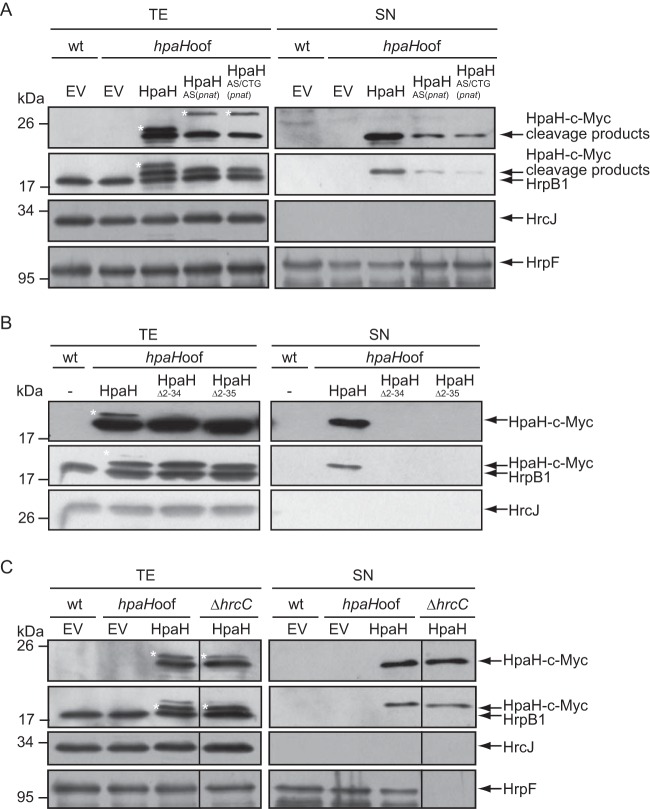FIG 4.
HpaH is secreted independently of the T3S system. (A) The HpaH-specific cleavage product is secreted. X. campestris pv. vesicatoria strains 85* (wt) and 85*hpaHoof (hpaHoof) containing vector pBRM (EV), HpaH–c-Myc, or derivatives thereof as indicated were incubated in secretion medium. Total cell extracts (TE) and culture supernatants (SN) were analyzed by immunoblotting using a c-Myc epitope-specific antibody. To ensure that no cell lysis had occurred, blots were reprobed with antibodies specific for the periplasmic HrpB1 protein and the IM protein HrcJ. To detect T3S, blots were reacted with antibodies specific for the secreted translocon protein HrpF. Note that HpaH derivatives were still detectable when the immunoblot was reprobed with HrpB1-specific antibodies. HrpB1, HpaH cleavage products, HrcJ, and HrpF are indicated by arrows. The asterisk refers to uncleaved HpaH–c-Myc or HpaHAS–c-Myc. (B) Secretion of HpaH depends on the N-terminal protein region. Strains 85* (wt) and 85*hpaHoof (hpaHoof) without an expression construct or encoding HpaH–c-Myc, HpaHΔ2–34–c-Myc, or HpaHΔ2–35–c-Myc as indicated were incubated in secretion medium. TE and SN were analyzed as described for panel A, using c-Myc epitope-, HrpB1-, and HrcJ-specific antibodies. (C) HpaH is secreted independently of the T3S system. X. campestris pv. vesicatoria strains 85* (wt), 85*hpaHoof (hpaHoof), and 85E*ΔhrcC containing vector pBRM (EV) or expression constructs encoding HpaH–c-Myc as indicated were incubated in secretion medium. TE and SN were analyzed as described for panel A.

